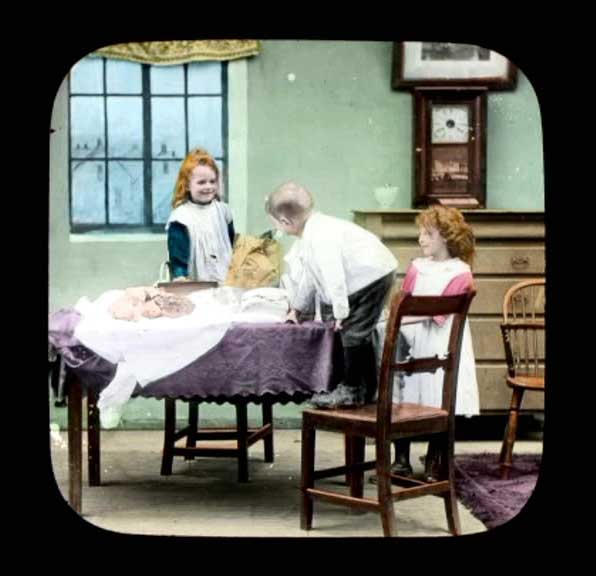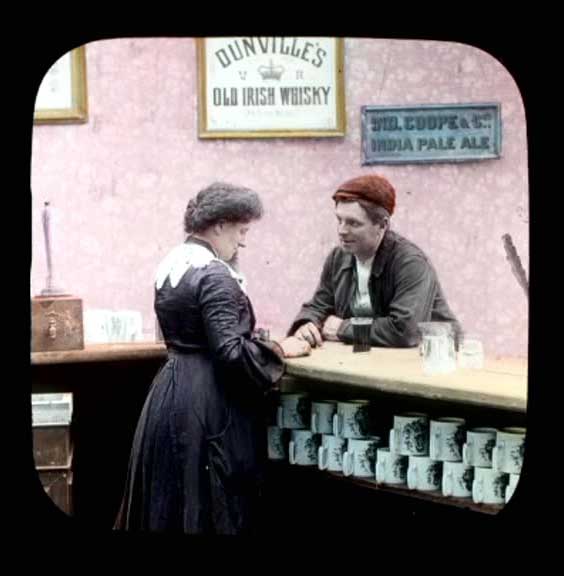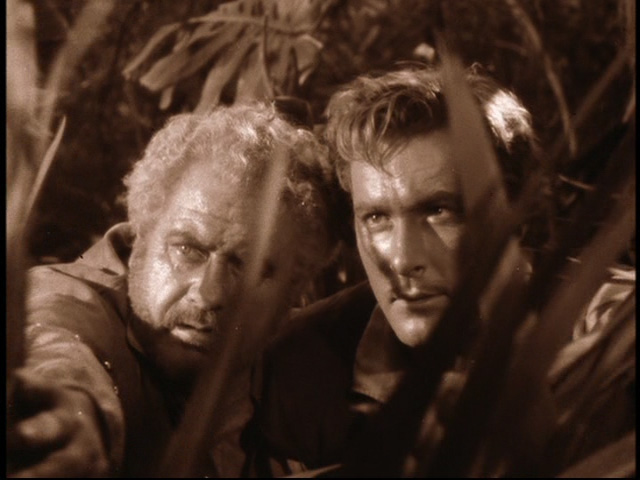Georges Méliès attempts to slay an evil fairy in THE KINGDOM OF THE FAIRIES. It doesn't go so well.
The color was applied by hand on each individual print with tiny brushes. Hand-color was a trademark and major draw for early French film.
The color was applied by hand on each individual print with tiny brushes. Hand-color was a trademark and major draw for early French film.
The French later developed a stencil color process. A stencil was cut for every color that would be applied to every individual frame and then pigment was stamped onto the prints.
During the feature era, the time and expense involved meant that stencil color was limited to sequences within the film. In MICHAEL STROGOFF, a stencil color ball is intercut with a tinted battle scene.
The 1925 Cyrano de Bergerac is one of the few feature films with stencil color in every scene and it is stunning, as well as being a fine adaptation.
American films were also colored from the very beginning, though their technique never matched the virtuosity of the French. Still, it was very attractive.
The Handschiegl color process involved color being stamped onto the print. It wasn't terribly precise but it was quite effective for flames, as was the case in JOAN THE WOMAN.
FAQ:
"Were they able to color one print and then copy it?"
No. Color film did not capture the full spectrum and was a pain to use. Hand, stencil and Handschiegl were all applied to each individual print.
Technicolor WAS a thing but its use was limited to extravaganzas.
"Were they able to color one print and then copy it?"
No. Color film did not capture the full spectrum and was a pain to use. Hand, stencil and Handschiegl were all applied to each individual print.
Technicolor WAS a thing but its use was limited to extravaganzas.
Early movies had to compete with popular magic lantern shows, which featured beautiful colored slides. Color was considered essential and an added draw; full-color films could demand double the price of films that were merely tinted.
Tinting and toning were by far the most common color technique with as many as 90% of films having at least some tints by the late 1910s.
Tinting colored light areas, toning colored dark areas and they could be combined in a single frame. Pink and blue was a popular combo.
Tinting colored light areas, toning colored dark areas and they could be combined in a single frame. Pink and blue was a popular combo.
FAQ:
"Why did tinting lose popularity in the talkies?"
Tinting was slowly falling out of favor in the 1920s but quite a few talkies in the 1930s & 1940s were tinted. Check out THE SEA HAWK's Panama sequence in sepia.
"Why did tinting lose popularity in the talkies?"
Tinting was slowly falling out of favor in the 1920s but quite a few talkies in the 1930s & 1940s were tinted. Check out THE SEA HAWK's Panama sequence in sepia.
Tinting could be literal with red for fiery scenes, gold for sunlight, blue for night and ocean scenes.
It could also be symbolic with rose symbolizing romance and, famously, lavender conveying the sickly atmosphere of a swamp in SPARROWS.
FAQ:
"So why are so many silents in black and white now?"
Many silent films were preserved by being transferred to black and white safety film. The films were saved but their color schemes, be they stamped, stenciled, hand-colored, tinted or toned, were lost.
"So why are so many silents in black and white now?"
Many silent films were preserved by being transferred to black and white safety film. The films were saved but their color schemes, be they stamped, stenciled, hand-colored, tinted or toned, were lost.
In fact, due to a combination of familiarity with black and white and some eyeball-searing attempts to restore tints, some viewers have complained the proper and accurate tints are garish.
In fact, whenever I post a GIF derived from the recovered, full-color print of A TRIP TO THE MOON, I am invariably lectured for the "no-no" of posting colorized film and am told to replace it with the "original" black and white!
FAQ:
"So, this is like the Greco-Roman statue thing?"
This is exactly like the Greco-Roman statue thing. https://www.newyorker.com/magazine/2018/10/29/the-myth-of-whiteness-in-classical-sculpture
"So, this is like the Greco-Roman statue thing?"
This is exactly like the Greco-Roman statue thing. https://www.newyorker.com/magazine/2018/10/29/the-myth-of-whiteness-in-classical-sculpture
But a silent film with its original colors proudly displayed is a beautiful thing indeed and many restoration teams are working tirelessly to bring those colors back.
For example, BEHIND THE DOOR only survived in black and white but records of its original color scheme survived and so the tints were replaced in the new restored edition.

 Read on Twitter
Read on Twitter




